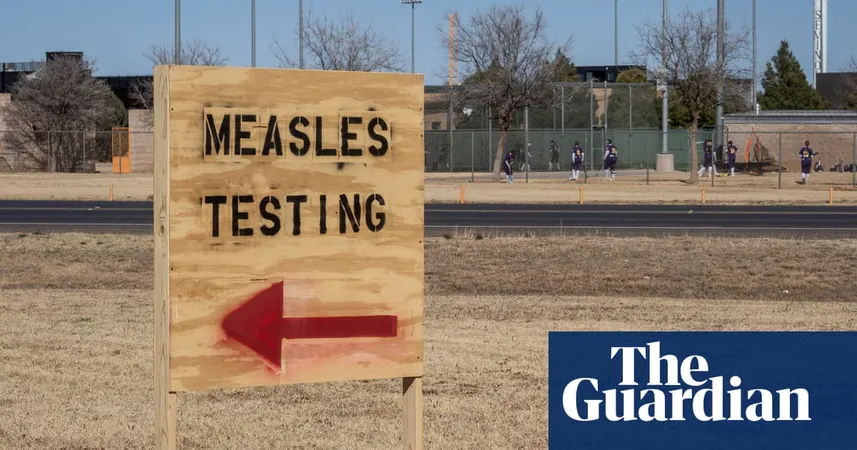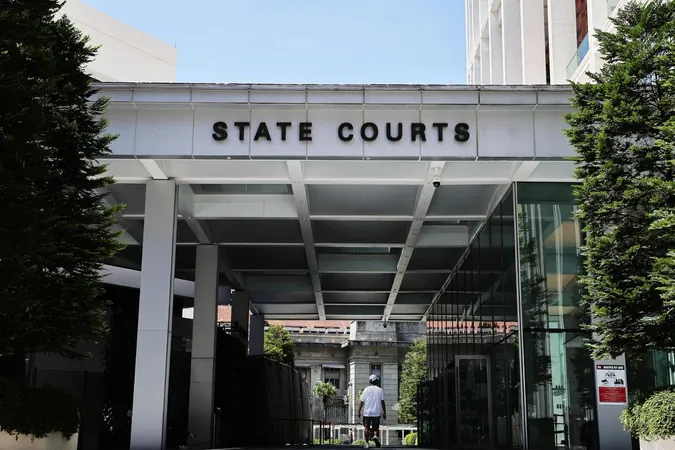
A Groundbreaking Project in Iceland Could Revolutionize Volcano Forecasting
2025-05-16
Author: Arjun
Imagine a volcano: towering mountains, bubbling lava lakes, and clouds of ash erupting into the sky. This vivid imagery only scratches the surface of what happens beneath the earth, where a volcano's heart—a magma chamber—holds the key to predicting eruptions.
Magma chambers are complex, incredibly hot reservoirs of molten rock that cause eruptions; however, they remain largely a mystery to scientists. Mike Poland, a geophysicist from the Yellowstone Volcano Observatory, admits that current representations of these chambers, often depicted as simplistic red balloons, fail to capture their true nature.
Understanding magma chambers could lead to dramatic advancements in volcanology, helping predict eruptions more accurately. However, current technology struggles to provide insight because these hot, deep locations are challenging to explore, leaving scientists often jokingly wishing for a "glass-bottomed volcano" to peer into.
Introducing the Krafla Magma Testbed: A Game-Changer for Volcanology
Enter the Krafla Magma Testbed (KMT) project in Iceland, aimed at drilling into a magma chamber to gain real-time data on its actions and movements. This pioneering endeavor could redefine how we understand and forecast volcanic activity.
Volcanology faces a significant challenge: while volcanoes provide warning signs before eruptions—unlike unpredictable earthquakes—the interpretation of these signs is often imprecise. For example, Mount Spurr in Alaska has shown signs of potential eruptions, yet experts cannot confidently predict the type or scale of volcanic activity to expect.
Eruptions bear serious implications: past events have caused evacuations, disrupted communities, and posed threats to lives. The question remains: how can scientists provide more accurate predictions?
Why Magma Chambers Matter: The Path to Improved Forecasting
Currently, volcano forecasts rely on recognizing patterns from past eruptions to gauge what might happen next. Scientists track gas emissions and seismic activities to draw conclusions based on historical behavior.
However, this technique resembles outdated weather prediction methods before advanced technological innovations transformed meteorology. Just as the weather field evolved with satellite data and direct measurements, Poland believes volcanology must follow suit by focusing on understanding the physical dynamics of magma chambers.
A Vision for the Future: Drilling Into the Unknown
The KMT project seeks to capitalize on a unique opportunity arising from past drilling accidents where researchers unintentionally struck magma chambers. Not only did this reveal that drilling into such chambers is less catastrophic than once feared, but it also opened the door for deeper exploration.
With plans to drill into the Krafla volcanic system, researchers aim to install instruments within a controlled pocket of cooled magma, allowing for unprecedented real-time data collection.
Should their plans come to fruition, the implications would be revolutionary—enhancing our ability to forecast eruptions with precision akin to that of predicting hurricanes. The potential benefits extend beyond science, presenting opportunities for geothermal energy harnessing from volcanoes.
A New Era in Volcanology?
If successful, the KMT project could usher in a new era, reshaping not just how we forecast volcanic behavior but also how we relate to the planet as a whole. As Lavallée, a key researcher in the project, asserts, the full scope of this endeavor might be beyond today's comprehension.
With excitement brewing in the scientific community, both Poland and Eichelberger anticipate that this project could drastically change the landscape of volcanology, leading to safer communities and a deeper understanding of our planet's fiery heart.



 Brasil (PT)
Brasil (PT)
 Canada (EN)
Canada (EN)
 Chile (ES)
Chile (ES)
 Česko (CS)
Česko (CS)
 대한민국 (KO)
대한민국 (KO)
 España (ES)
España (ES)
 France (FR)
France (FR)
 Hong Kong (EN)
Hong Kong (EN)
 Italia (IT)
Italia (IT)
 日本 (JA)
日本 (JA)
 Magyarország (HU)
Magyarország (HU)
 Norge (NO)
Norge (NO)
 Polska (PL)
Polska (PL)
 Schweiz (DE)
Schweiz (DE)
 Singapore (EN)
Singapore (EN)
 Sverige (SV)
Sverige (SV)
 Suomi (FI)
Suomi (FI)
 Türkiye (TR)
Türkiye (TR)
 الإمارات العربية المتحدة (AR)
الإمارات العربية المتحدة (AR)